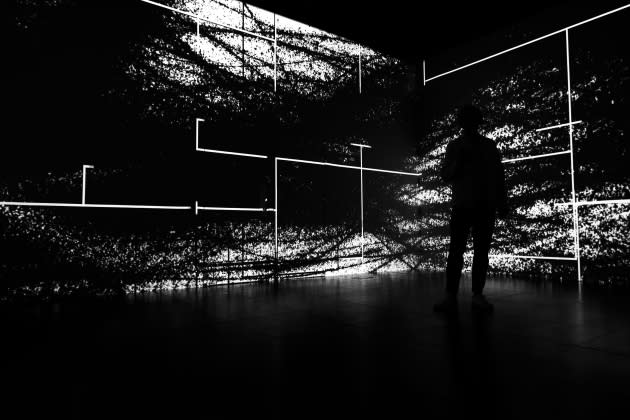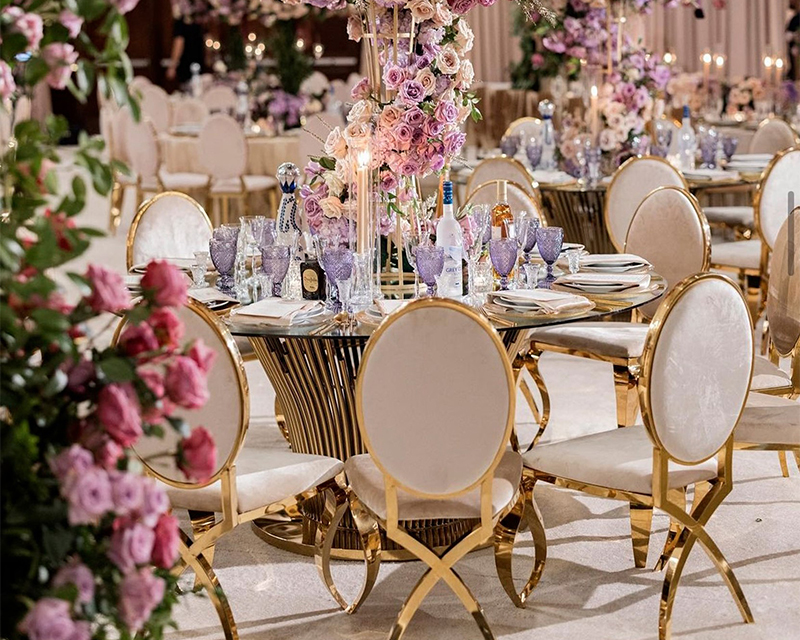
The mere mention of experiential retail can be eyelid-lowering, given the frequency with which it is used.
But Mona Kim, a design consultant and visual artist for cultural and commercial projects, thinks the fashion crowd is falling flat in that department. Her Paris-based firm Mona Kim Projects handled the creative direction of the just-opened immersive exhibition “Batman x Spyscape” in Manhattan. That involved the design, curation, co-production and choreography of its immersive media — sound, light, visuals — and the physical environment. It also required a nearly monthlong stay for the experiential spatial designer, who has since returned to Paris.
More from WWD
Housed in part of the 60,000-square-foot Sir David Adjaye-designed building, Spyscape, as the name suggests, is all about espionage. The new exhibition brings together Warner Bros. Themed Entertainment on behalf of DC and Spyscape to create an app-driven experience that plays out in three acts. Participants embark on an undercover top-secret mission to infiltrate Leviathan, an underground organization that is trying to upend the Super Hero and Super Villain communities.
Having worked on immersive experiences for Uniqlo, Samsung, Duet Sports and other companies, Kim was recommended for the project by a Wieden & Kennedy executive. Although her latest project is not a fashion one, brands and retailers could learn from the experience, she said. Her work in immersive exhibitions has always been inspired by both contemporary theater and dance, especially in relation to light, audio and media. That arts-inspired approach not only transforms the physical space but creates a more emotionally moving experience, Kim said. “It doesn’t become just this digital experience without any emotion,” she said. “There is a storyline and a linear narrative that helps you participate as a game. There are three different ways of experiencing the exhibition.”
The timed admittance from one area to the next passes quickly with text cues — such as what to keep an eye out for — from the character “Oracle.” “Basically, the physical space knows which room you are in and is connecting to the app,” Kim said. “In some spaces you can wander around, but the app is almost totally linear. You are supposed to be uncovering information.”
Making the point that thematic exhibitions usually lack these emotion-inducing features, she said, “On the other hand, we are used to seeing fashion shows and brand activations where the confluence of audio and light is very emotionally driven. But what we don’t see is the merging of highly sophisticated real-time interactive app technology. The idea of mission-driven gamification is a way of learning and discovering content. Content translated in the fashion world is product.”
The use of a real-time app to interact directly with a physical environment is a concept that fashion companies and designers could make far better use of, according to Kim. “They could be inspired in terms of their brand activations as well as fashion shows. It’s the use of strategy to engage the public and the end user,” she said.
After downloading the app, users immediately are pulled into chatty and lengthy texts with Oracle, who sends them on a mission to uncover some secrets behind this evil organization Leviathon. In a holding area, admission, visitors are cued by Oracle to keep an eye out for messages. Amidst what sounds like “very friendly and New Age-y music,” there are recorded whispers along the lines of we-are-one-of-you and a subtle floor design of “there-is-a-better-way.”
Once through the doors, participants are greeted with a silvery bulbous sculpture that is made of real surveillance mirrors. On the room’s four walls, split video screens play footage of Leviathan-affirming testimonials by four people, who can only be seen by the backs of their heads. “Being in this welcome center, you’re seeing a public false face of this organization,” Kim said. “From the sculpture, there are some whispers like [‘Stop blaming yourself’] and evil murmurs coming out” that hints at subliminal messaging.
Moving into the portal between the public space and the command center, visitors see what amounts to a highly artistic black and white light show with foreboding music, before the flashes appear to unlock the door. Once in what looks like an abandoned headquarters, the premise is that all of the organization’s employees have evacuated their work spaces because they realized there were intruders — as in the visitors who just arrived.
Oracle prompts them via text to look around for some intel. Feeds of data unspool endlessly on tabletops and work stations. A nearby video console reveals how the arrival area had actually featured “very forced testimonials” and participants. The set-up is also a modernized version of the DC Comics world with footage of recognizable characters like “Robin.”
All in all, the darkened space has an architectural feel with narrow beams of light shooting down from the ceiling to create what almost looks like the rails of a jail. The exhibition’s messaging includes corporate greed, the public face of a corporation versus its inner workings and “techno-slavery,” Kim said, “In a certain way, the physical environment is reimagining what a high-tech powerful organization might be even in today’s world. We are always influenced by the reality around us. How do we reimagine that?”
Asked why fashion companies often flop with immersive experiences, Kim said that whether it’s fashion shows or brand activations like product drops, they tend to be flat. Human beings understand stories because it’s easy for them to follow, retain and engage before, during and after. “That’s what this exhibition is trying to do and why I think it’s successful. People can download the app and start interacting with it before coming here. The second part is coming to this exhibition and interacting with the app. And the third part can continue interacting and being sent on missions by the app,” she said.
Similarly, “museum exhibitions fall short on lastingness in that you see the exhibition, you’re influenced and them you go back to your normal life,” Kim said.
Another area showcasing key DC artifacts like Wonder Woman’s tiara are reverse engineered, the idea being that doing so will turn them into powerful weapons for themselves. The computerized sound is meant to be probing and calculating, whereas the motion graphics are about scanning and coding. The concept is designed to be a mash-up of museum artifacts and modern media to create an immersing effect. The exhibition also features Batman-related art by Jim Calafiore.
The exhibition’s original narrative was written by the critically acclaimed Gail Simone, who is known for her work in DC comics like “Batgirl” and “Wonder Woman.” The project also enlisted other women, including several in the build-out of part of the exhibition — painting, built, lit, fabricated and installed by women. “I mention that because the entertainment sector is still very male-dominated. The physical build-out is very male-dominated. But in this project, there were many female leaders [including the main character Oracle],” she said. “I also see this as a very interesting model of a future way of working, where there is no tension or question about the gender power play. What we experienced was a real harmonious collaboration even with globally distributed teams via Zoom or on-site.”
Some of the other key creatives who helped to realize her vision are Tomato’s Simon Taylor, a filmic and graphic designer specialist; sound designer, techno DJ and composer Ferdinand Gratz, and Studio Kunze’s Jeremy Kunze, an art direction and graphic design authority.
Kim wasn’t involved with the design of the merchandise that is being sold in the museum store, but did select the “welcome center’s” security guards’ all-black “techno-ashram look” — a mandarin collar shirt, black wide-legged cropped pants and all-white high-top sneakers.




